Vibrations of MgO crystal


Vibrations of MgO crystal


11. Once the run_DFT_script finished its work, you should be able to find output files of VASP with forces on atoms in the corresponding directories, e.g. see below:
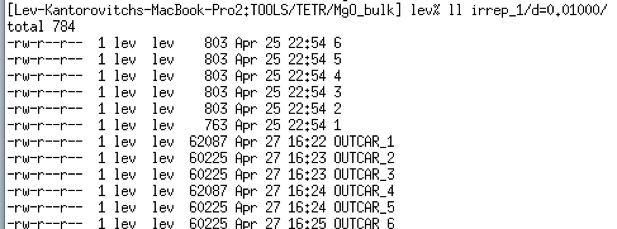
12. Run tetr again as usual; enter the main menu and then go to V2:
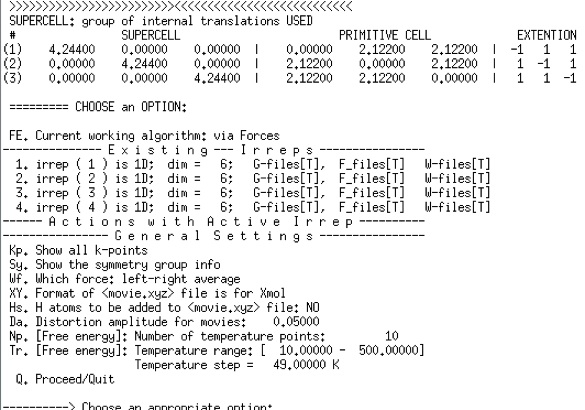
13. All irreps in the current system are shown numbered from 1 to 4. Options Kp and Sy give the symmetry information again, specifically the correspondence of the irreps to the k-points.
14. Let us try to see the results for the third irrep: type 3 (below):
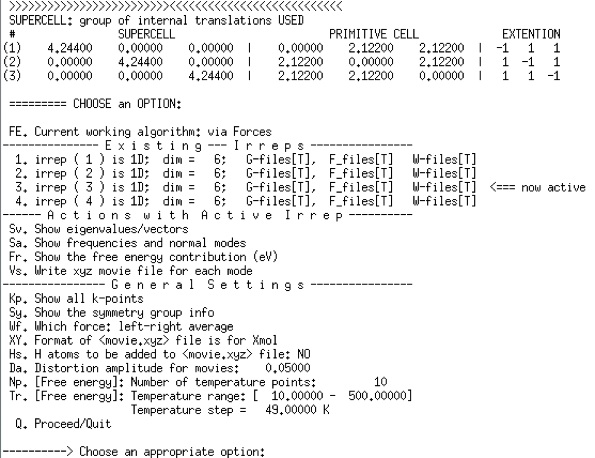
The irrep becomes “active” and new options become available for it.
15. Option Sa shows the eigenvectors and eigenvalues (frequencies) for this particular irrep (below):
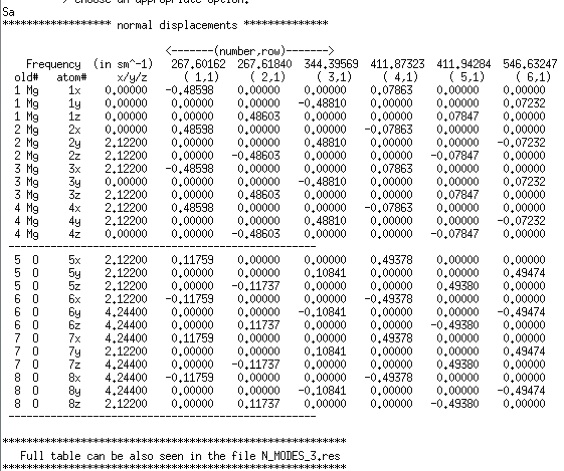
There are 6 eigenvectors, the first 3 are acoustic and the last three - optical:
-the 1st involves x-displacements of mostly Mg atoms;
-the 2nd mode is nearly degenerate with the 1st one (its frequency is most likely to be exactly the same as the 1st one; the discrepancy is due to the numerical nature of the calculation), but this time the z-component of Mg atoms are only involved;
-the 3rd mode involves the y components of the Mg atoms, etc.
-the last three modes are mainly due to O atoms.
16. There are three ways in which the force-constant matrix can be constructed from atomic forces; using Wf one can change the method, look again at the frequencies and hence judge whether the precision of the calculation is sufficient. Currently, the method is “left-right average” (the default). Type Wf now: the method changes to “right-upper triangle”. Now press 3 again to recalculate the frequencies and then look at them using Sa:
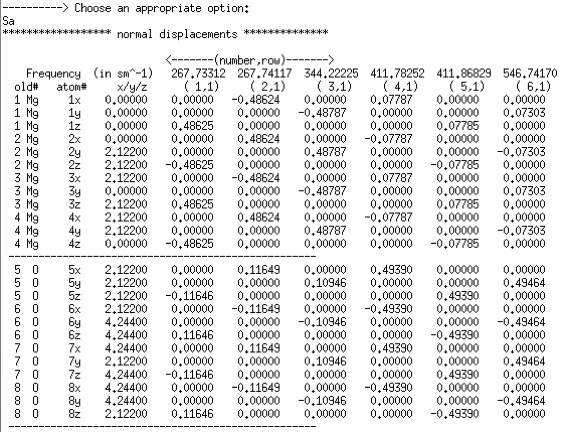
Compare with the previous result: the frequencies are only slightly different.